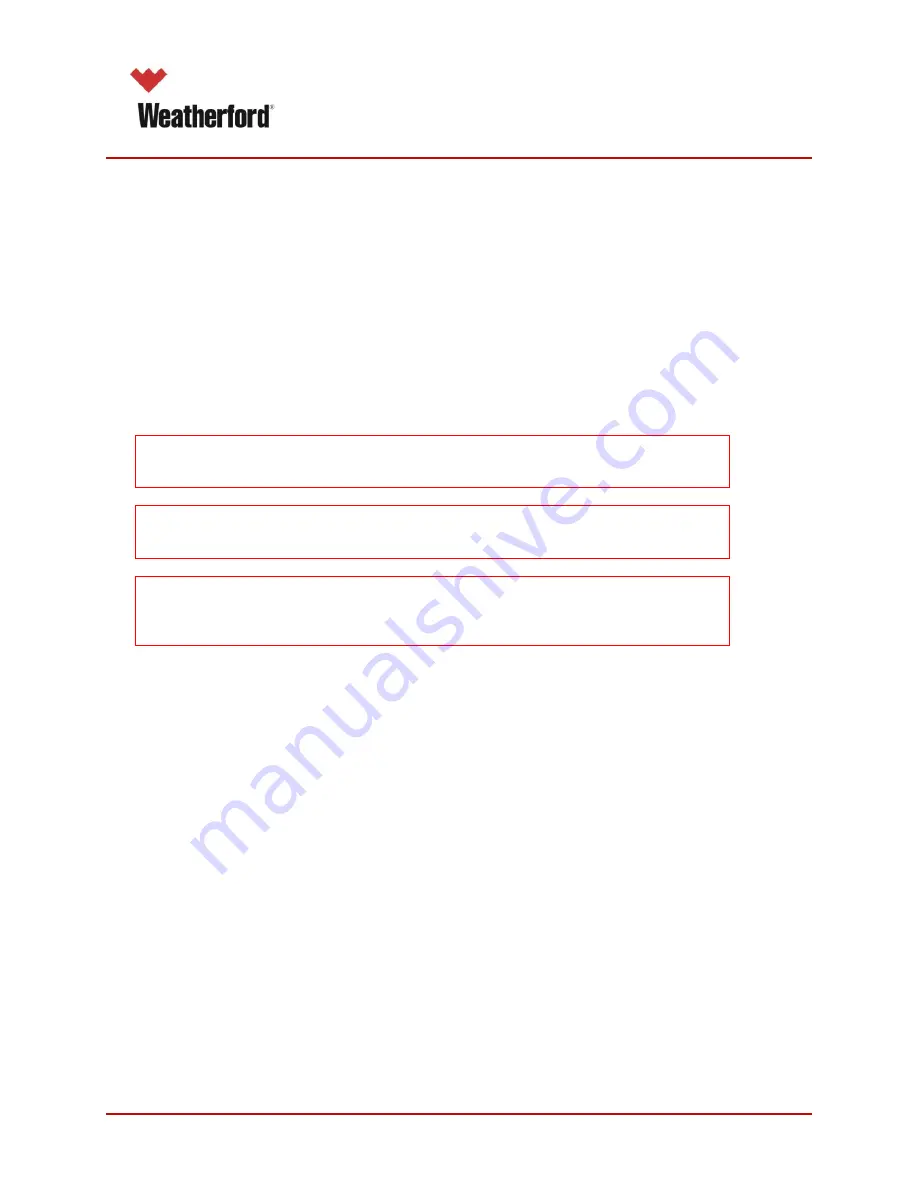
Pump and Fluid Systems
Chapter 2: Storage & Installation
weatherford.com
12
MP-16 2-Piece 5000 psi January 2013
Line Valves
When selecting valves for the piping, personnel should ensure that only full open valves
are used. Plug type and full opening gate valves are good candidate types.
Pressure Relief Valve
A pressure relief valve should be installed on the opposite side of the pump discharge
manifold from the strainer cross, and incorporate a high pressure relief line. The valve should
be a full-opening reset type valve, and set to a pressure no greater than 15% of the working
pressure of the piston size that is being used.
The Pressure Relief Valve discharge line should be short, straight securely anchored and
slope downwards at least ¼” per foot in order to prevent solids from settling in the line. The
piping should be the same size as the valve discharge opening, and lead back to the supply
tank, but not the pump suction.
WARNING
The Relief Valve must not be connected to the strainer cross, as the
systems can interfere with one another, resulting in potentially life-
threatening situations.
WARNING
Do not put any type of shut-off valve between the pressure relief valve
and the discharge manifold, in order to protect the system against
damage resulting from accidental or incorrect start-up
WARNING
The Relief Valve outlet must not be connected to the pump suction
line. This can cause uncontrollable pressure surges in the suction line,
which can result in equipment damage and significant injury to
personnel.
For full operating instructions and guidelines for this equipment, see the documentation
provided by the pressure relief valve manufacturer.
Gauges and Meters
A pressure gauge should be installed on the pump discharge, and a high-low pressure
alarm system should be utilized to address problem conditions that could lead to pump failure.
For full operating instructions and guidelines for this equipment, see the documentation
provided by the manufacturer.






























